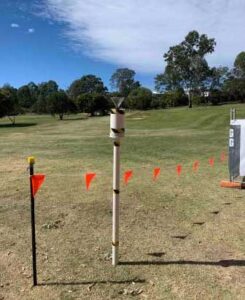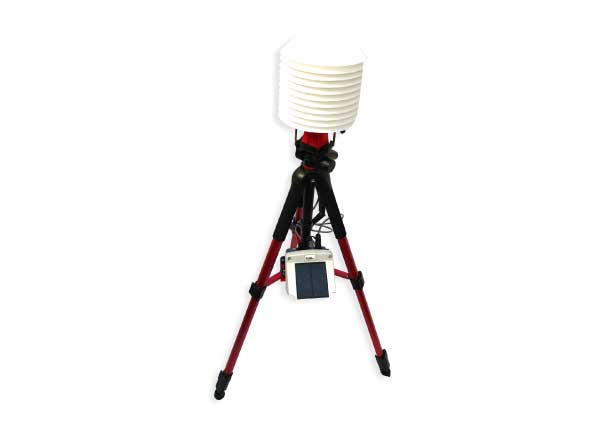Dust
Dust is a generic term used to describe fine particles that are suspended in the atmosphere. Airborne particles can be hazardous to human health or cause nuisance. Dust is classified according to the physical size, as follows:
- Deposited matter refers to any dust that falls out of suspension in the atmosphere.
- Total suspended particles (TSP) typically refers to particles 100μm (micrometers) (0.1mm diameter) in size or less.
- PM10 refers to particles 10μm (0.01mm) in size or less.
- PM2.5 refers to particles 2.5μm (0.0025mm) in size or less.
Deposited matter
Deposited matter generally comprises particles larger than 20 micrometres in diameter that rapidly settle out of the air near the point of emission. It is measured to assess if an emission source is causing nuisance. Deposited matter is measured using dust deposition gauges. This method measures dust deposition rate and involves the passive deposition and capture of dust within a funnel and bottle arrangement. Data is usually collected over monthly periods.
Total suspended particles
Airborne particles up to about 100 micrometres in diameter are referred to as TSP (total suspended particles). These particles can cause nuisance. Health effects associated with TSP mainly arise from the fraction of particles less than 10 micrometres in diameter.
Dust health effects
Not all of the dust that is breathed in will get into the lungs. The larger particles (greater than approximately 100 μm) are filtered out in the nose and the conductive airways (the bronchi and bronchioles). The particles that can enter deep into the lungs are called ‘respirable’.
The factors that influence the health effects of dust are:
-
- size of the dust particles
- composition of the dust particles
- concentration of the dust particles in the air
- duration of exposure (possibly in years) to the dust particles.
The health impacts of dust are generally related to suspended particles in the air, rather than dust deposited from the air. Dust particles PM10 or less in size are likely to have the greatest health impacts because they may be drawn deep into the lungs. Particles larger than PM10 tend to be trapped in the nose, mouth, throat or bronchi and are typically expelled from the body.
Particles less than 10 micrometres in diameter (PM10)
Particles smaller than 10µm are especially concerning as these particles can enter the human respiratory system and penetrate deeply into the lungs, causing adverse health effects.

PM 10 particles in the air (source: https://www.epa.vic.gov.au/for-community/environmental-information/air-quality/pm10-particles-in-the-air)
Particles less than 2.5 micrometres in diameter (PM2.5)
PM2.5 particles can penetrate the lower airways of humans. These particles are so small they can get deep into the lungs and into the bloodstream. There is enough evidence that exposure to PM2.5 over long periods (years) can cause adverse health effects.

PM 2.5 particles in the air (source: https://www.epa.vic.gov.au/for-community/environmental-information/air-quality/pm25-particles-in-the-air)
Volatile Organic compounds (VOCs)
VOCs are a group of carbon-based chemicals that easily become vapours or gases at room temperature. As they easily evaporate to gases are emitted into the ambient air from several industrial processes like burning of different fuels (such as gasoline, wood, coal, or natural gas), landfills, waste treatment and manufacturing of household products.
Different VOCs have different health effects and range from those that are highly toxic to those with no known health effects. As some of the VOCs are harmful to the health and can cause cancer, if detected in the environment or in the workplace they should be characterised.
Terra Sana Consultants can help to screen for the presence of VOCs and provide laboratory analysis to characterise the mixture and identify any dangerous compounds.
Real-time Dust Monitoring
Terra Sana Consultants has developed in-house a Portable Laser Dust Sensor for Quantification of Particulates in Ambient Air. Download our brochure here.
Real-time dust levels at your fingertips
- Easy Installation and use
- Extremely portable
- Robust build with quality components
- Laser technology
- Maintenance-free
- Dust and waterproof
- Low cost


